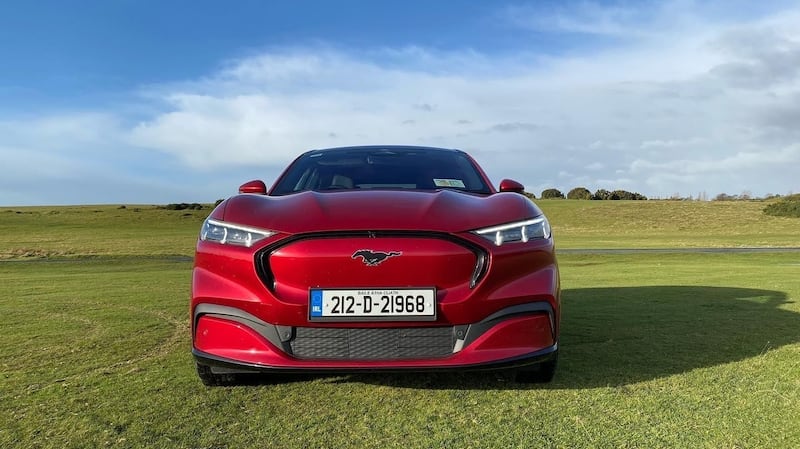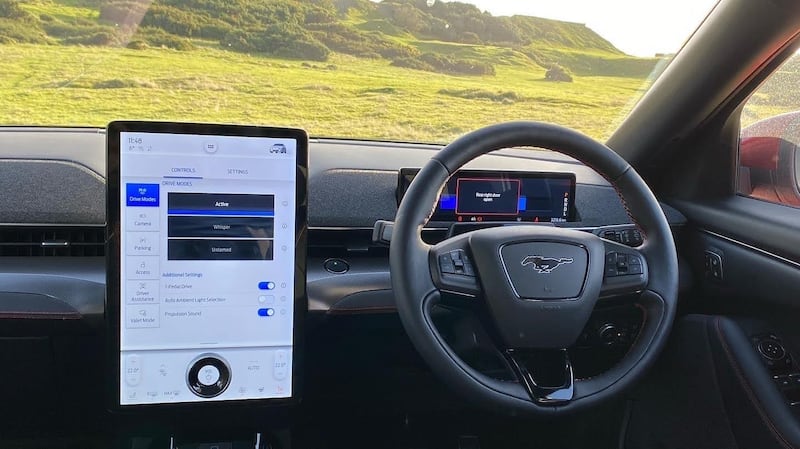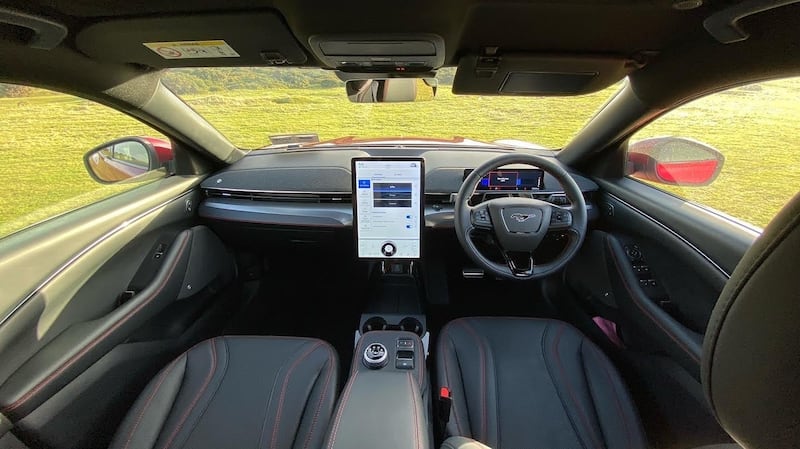When it kicked off development of the new Mustang Mach-E, Ford knew that it couldn't do things normally. The Blue Oval's huge corporate organisation had been put to shame in recent years by Tesla's dazzling success, not least its market valuation, which put the Californian start-up as being worth far more than the Detroit colossus.
We can debate endlessly (and largely pointlessly) the bubble-like stock market valuations of tech companies, but Ford knew it had to change the way it developed its new electric vehicle. So, a skunk-works was set up within Ford, a small team of engineers and designers, answerable only to the highest ranks of managers and vice-presidents, who could get on with working on the new car without let or hindrance.
That group was called Project Edison, which is significant in two ways. Clearly, Ford was trying to imbue its new electric car with the adventurous spirit of the Wizard of Menlo Park (ignoring, momentarily, debates about how many ideas and concepts Thomas Edison might have come up with himself, and how many were stolen from other engineers and designers . . .), but clearly there's a shot across Elon's bows too – Nikola Tesla once worked for Edison and was, in part,bankrupted by Edison's hard-edged competitiveness.
Whatever the pros and cons of invoking Edison’s name, Ford definitely pulled a stroke of genius in naming its new electric SUV a Mustang. Sure, it provoked a firestorm of anger from some traditionalist quarters, adamant that a car with a Mustang badge could nor should be either an SUV or powered by batteries, but it also acts as a marker – a marker that there are no sacred motoring cows in the electric revolution.

More significantly, it also means that Ford can charge more for the Mach-E (that name a take on the classic 1970s' Mustang Mach-1, with its monstrous V8 petrol engine). The Mustang name and brand might not quite have the same kudos in Europe as it does in the United States, but on the other side of the Atlantic, Mustang plays in the same sandpit as Porsche, Maserati and, crucially, Tesla.
Elon’s influence on the Mustang Mach-E is clear. The styling, which rather successfully lifts little cues and hints from the handsome Mustang coupe, pays Tesla homage with that blanked-off grille at the front, while the battery sizes and ranges of the Mach-E neatly straddle the Model 3 and Model Y.
In fact, you can have more range from your Mach-E than you can from a Tesla. A Model Y Long Range offers 507km of one-charge driving, while a Mustang Mach-E Extended Range AWD can take you for a theoretical 540km thanks to its massive 91kWh battery.
Well, theoretically theoretical. We found that the Mach-E was giving us rather less range than that in daily driving. On a full charge, the best figure we saw on the neat little digital instrument screen was 475km, and if you’re doing lots of motorway driving, that can fall closer to 350km. A Tesla holds on to its range rather better than that.

At least the Mustang charges quickly. With the optional 150kW charging system, you can inhale an 80 per cent charge from a suitably rapid public charging point in about 30 minutes, so however far you’re driving you won’t have to stop for long. The Mach-E has enough range to do intercity hops without much difficulty, though.
Over two weeks of driving, we put more than 1,300km under its wheels, so even with Ireland’s somewhat sparse charging network, most drivers won’t have much in the way of range anxiety with one of these. That may prove rather less the case with the 440km standard-range 70kWh model.
Refinements
While it’s a comfortable long-haul cruiser (great seats, spacious cabin), the Mustang Mach-E definitely needs some work done on its refinement. There is way too much wind noise around the optional panoramic glass roof, and there are too many clonks and shunts coming from under the floor as the battery’s cooling and heating system goes to work.
And then there's the ride. The suspension smooths out at speed, but around town it's very stiff and fidgety, although it has better damping and better noise isolation than the Tesla Model Y.
Does this sound like we’re rather down on the Mustang Mach-E? Actually, we’re not. It’s a flawed car, but above all it’s fun and that’s just not something you can often say about this first generation of electric cars.
For a kick-off, it’s lighter than most of the opposition, tipping the scales at 2.2tonnes with the big battery and all-wheel drive courtesy of two electric motors. Performance is excellent, with 351hp and 580Nm of torque ready to fling you to 100km/h from rest in 5.1 seconds. There’s an excellent “one-pedal” driving system which uses the electric motors to do most of your slowing down, which works really well, but the physical brakes could do with a little more bite.
The steering is a little odd. At first, it has that same fluid feeling as you’d get from a Focus or a Kuga, but after a while you realise that the weighting and assistance seem to be a bit inconsistent. It’s an odd slip up from a Ford engineering team that usually delivers the dynamic benchmark in its class, but the good news is that you can push through that.
Switch the driving mode over to “Untamed” (well, a Mustang is supposedly a wild horse) and the Mach-E feels agile, points sharply into the apex of a corner and is massively good fun to drive. It belies that 2.2tonne weight on a twisty road, and on wet roundabouts you can even convince the tail to tweak out of line a little, like it’s a huge, electric, MkII Escort.
Another Mach-E high point is the big touchscreen, which uses Ford's impressive new Sync4 software, and is easier by far to use than what you'd get in a rival Volkswagen or Audi. It's about on a par with the Tesla set up, but improves on Musk's efforts thanks to the extra driver's display behind the steering wheel. Still no heads-up display though, which seems like an omission.

Space is good in the cabin, but less so in the 402-litre boot although that’s augmented by a useful 80-litre “frunk” space under the bonnet. The button-activated door release is either a neat, tech-y touch or wildly infuriating – delete according to taste and/or mood.
Ford’s future EV plans seem a little mixed. Although huge efforts have clearly been expended developing the Mach-E’s platform, and a separate EV chassis for the big US-market F-150 Lightning pick up, in Europe Ford is going to piggy-back on Volkwagen’s tech, and use Volkswagen’s MEB electric chassis for a Focus-sized crossover, set to launch in 2024.
Whatever the fruits of such platform-sharing might be, we doubt that an MEB-based Ford can be as much raw fun to drive as this Mustang. Sure, it’s got its flaws, but it compensates with genuine driver engagement and a big dollop of character. Does Tesla need to, once again, fear Edison?
Lowdown: Ford Mustang Mach-E Extended Range AWD Edition 1
Power: 258kW twin-motor electric system and a 91kWh battery (net) developing 351hp and 580Nm of torque, driving a single-speed automatic transmission and four-wheel drive
CO2 emissions (annual motor tax): 0g/km (€120)
Electric range: 540km
Electric consumption: 18.7kWh/100km
0-100km/h: 5.1 seconds
Price: €76,100 as tested; Mustang Mach-E starts at €53,100
Our rating: 3/5
Verdict: Flawed, but big fun










